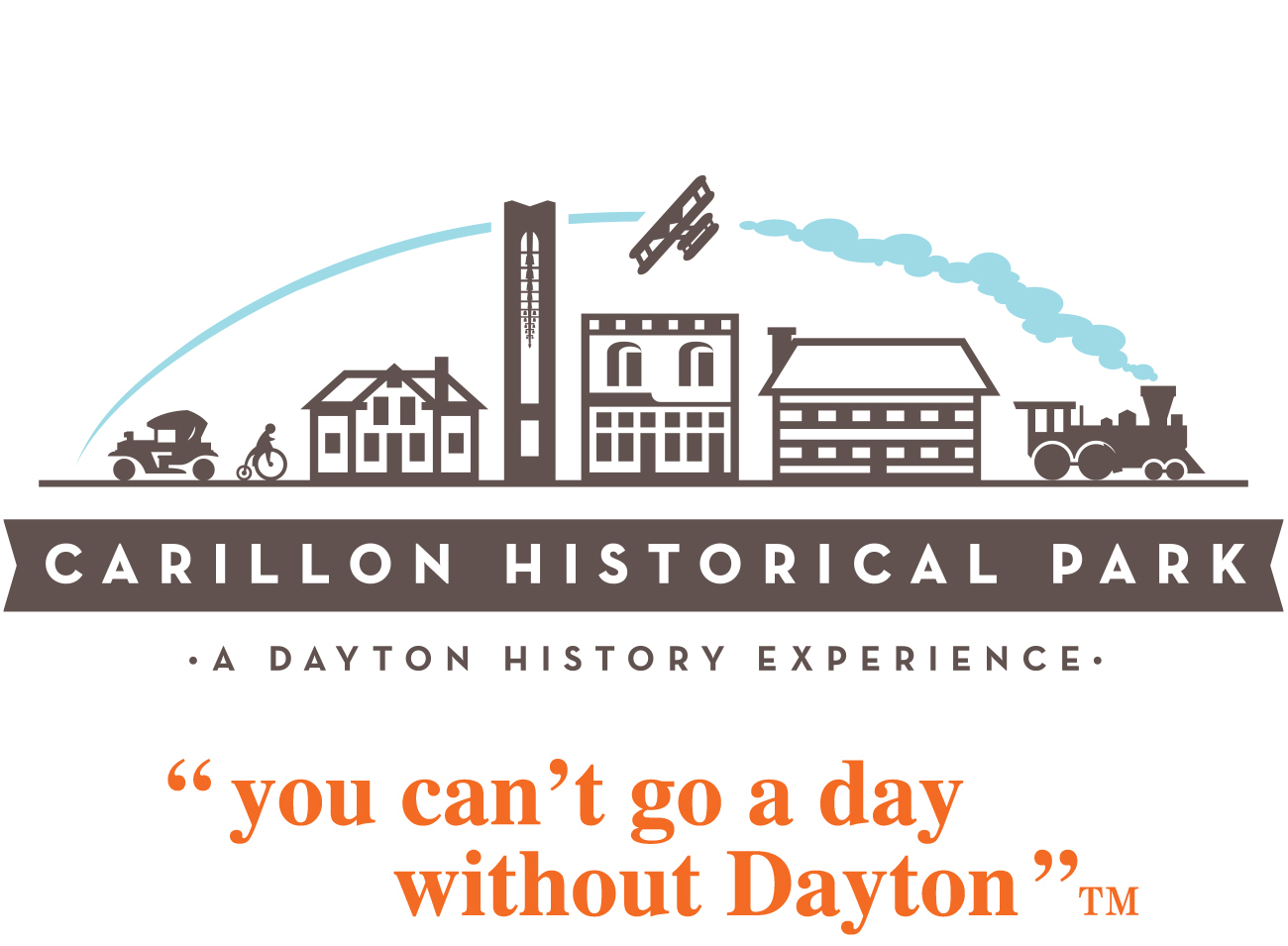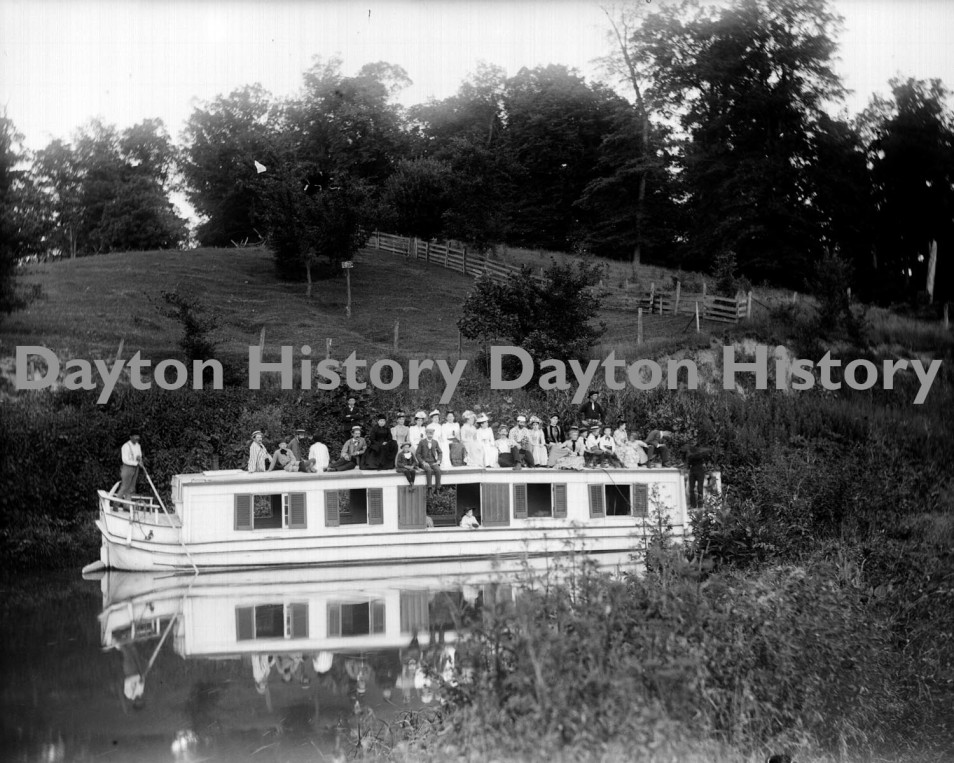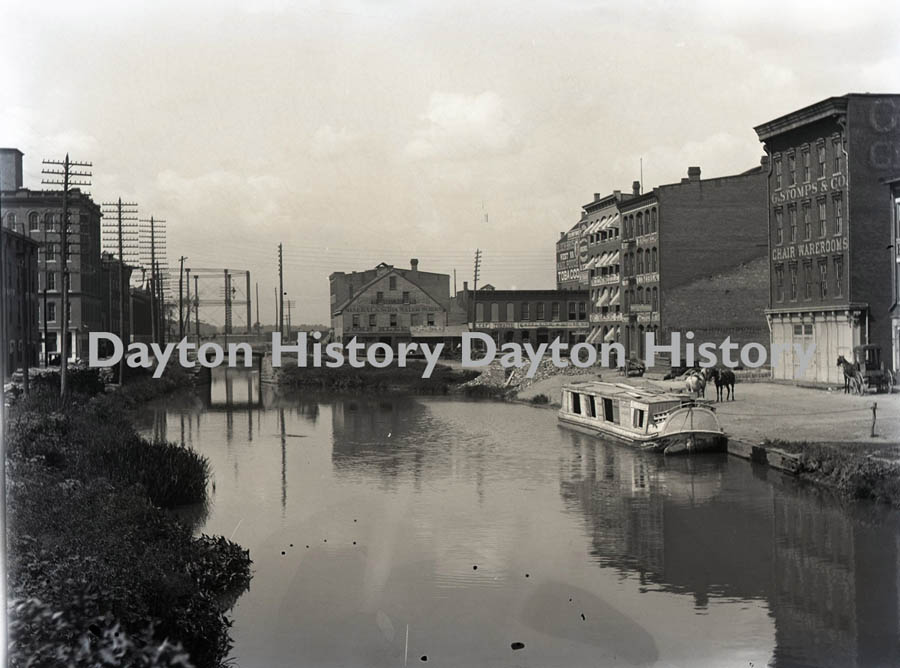ArtiFACT Friday- July 11, 2014
Canals and their Commercial and Social Influence…
Ohio farmers and manufacturers were producing goods in abundance and much of the East Coast was in want of those very products. Unfortunately, transportation costs had skyrocketed because over land transport was painfully slow and treacherous and river transport had become unreliable as dams and milling operations built along waterways had caused severe fluctuations in the flow of water. A canal system would provide the state with the necessary means to move people and goods in a more efficient and cost effective manner so construction began on the Miami and Erie Canal in 1825. Once completed, the canal was over 248 miles in length and had 19 aqueducts, 106 locks, and three large reservoirs that had been built to feed the waterway in times of low water. But the canal did more than just provide transport for goods, as it was also a means for social exchange and recreation. In the summer months, groups and organizations would hire canal boats for social outings and picnics. A not uncommon sight along the way include seeing folks taking a dip in the cool canal waters on a hot summers day or relaxing under a shade tree with their favorite fishing pole by their side. In the winter, when the canal froze over, many an adventurer could be found ice skating back and forth on the smooth, frozen surface. This week’s photo is from the Albert Kern Collection in Dayton History’s Image Collection.
To see other historical images from our collection, search our Digital Photo Archive.
ArtiFACT Friday- July 4, 2014
A New Era Begins…
On this day, one hundred and ninety-two years ago, during 4th of July festivities in Newark, Ohio, Governor DeWitt Clinton of New York and Governor Jeremiah Morrow of Ohio dug the first spadesful of dirt, officially beginning work on the Ohio and Erie Canal. Seventeen days later, in Middletown, Ohio, Governor Clinton and several other notable individuals held a second ground-breaking ceremony, this time for the Miami and Erie Canal. Thus, the age of the canals had begun in earnest, in the great State of Ohio. The idea of connecting the Great Lakes and the mighty rivers of the Ohio and the Mississippi was not a new one. It was Thomas Jefferson, who, in 1786-87, was first to make a definite proposal for connecting these by means of a canal going through the state. The canals had a profound effect in Ohio, having increased the potential for economic development prior to the Civil War; thereby transforming what had been a somewhat isolated wilderness into a powerful state, both in terms of population and wealth. Such was the case for Dayton and the rest of Montgomery County as well, with the Miami and Erie Canal stretching from Toledo and Lake Erie down to Cincinnati and the Ohio River. A new era of prosperity and growth had begun as goods, information and people were now able to travel great distances more efficiently and cost-effectively than over land. Pictured here is a section of the canal, lined with businesses in downtown Dayton. The image is from the Albert Kern Collection at Dayton History.
To see other historical images from our collection, search our Digital Photo Archive.






